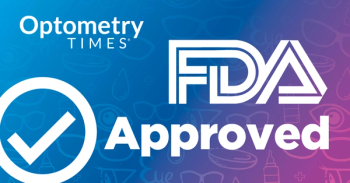
New glaucoma drugs aim to shake up market
Reuters recently reported on a new wave of drugs in development that it says will shake up glaucoma treatments. When the consumer media is giving your patients direct information about eye care, are you ready to answer their questions?
Washington, DC-Reuters recently reported on
Reuters reports that the newcomers to the glaucoma market aim to disrupt the current leaders
“We are finally seeing the dawn of a new generation of glaucoma medications,” says Optometry Times Editorial Advisory Board member Ben Gaddie, OD, FAAO. “The last true new mechanistic class of glaucoma medications was 1996 with the introduction of the prostaglandin analogue, Xalatan (latanoprost, Pfizer). Think about that-there have been three U.S. Presidents in office during that time; six versions of the iPhone introduced; and the birth of text messaging since the last new innovation.”
Among the pharmaceutical companies planning to launch new glaucoma treatments is
“In addition to
The Reuter’s report also mentions
"It is exciting to have a new class of medication that will work with a different mechanism, and it will change glaucoma management by providing another option," says Optometry Times Editorial Advisory Board member Joseph Sowka, OD, FAAO. "It will be something different in our armamentarium. We don't know that this will be as big as prostaglandins or as well tolerated like some of the other medications. I remember how excited we were about a topical carbonic anhydrase inhibitor coming, thinking that it would have the efficacy of Diamox, but in a better tolerated topical form. Of course, we had to temper our expectations."
The experts weigh in
"At a time when the surface progression seems to have stalled, it is encouraging that additional therapeutic options will be available," says Optometry Times Editorial Advisory Board member John McSoley, OD. "Innovative and/or additive therapies are always welcome. We all need to remain informed throughout this evolution, with a critical eye toward comfort, safety, and efficacy of all the new therapies. Patient access to well-informed clinicians and effective treatments ultimately leads to greater preservation of sight. This sounds like good news for doctors, but better news for patients."
While most glaucoma patients are older and may not be turning to online sources, such as Reuters, for their health information, Dr. Sowka says it's important to stay informed just in case a patient has questions. Optometry Times Editorial Advisory Board member
“Novel therapies for glaucoma are constantly being investigated at different stages, and it is difficult to project which ones will have the most promise,” says Dr. Casella. “That being said, ROCK inhibitors seem to hold considerable promise in this regard. Further, novel therapies that work in conjunction with current drugs, such as prostaglandins, will likely be increasingly common in the near future.”
“While these younger, more nimble companies race for the next mechanistic glaucoma agents, the market-leaders such as Alcon and Allergan have turned their attention to new delivery options for currently available drugs,” says Dr. Gaddie. “Drug delivery is another ‘next frontier’ in glaucoma and it likely represents options for slow or extended release through subconjunctival, sub-tenons, or intraocular injection. This could represent a challenge for optometrists who may have limitations on their scope to deliver medications through these methods.”
But alternate delivery methods, such as contact lenses and punctal plugs, may take the lead over injectable medications in the future, he says, and optometry should be ready.
“State boards and optometric associations should be looking out five to 10 years to make sure their practice statutes are sustainable relative to these new delivery methods,” says Dr. Gaddie.
Newsletter
Want more insights like this? Subscribe to Optometry Times and get clinical pearls and practice tips delivered straight to your inbox.



















































.png)


